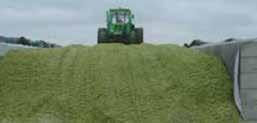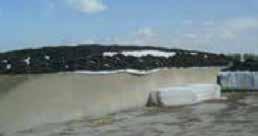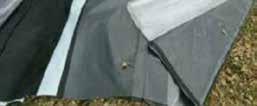
2 minute read
Silage Quality
Making quality silage is vital to beef and dairy farming in Ireland. In making silage there are two primary quality parameters that need to be considered, preservation and feeding value. Preservation must always be good in silage making. Covering your silage clamp with a poor quality cover can lead to a serious reduction in the quality of your silage. Poorly preserved silage could lose up to 5% units of DMD. Each drop of five DMD units reduces milk yield by almost 1.5 litres of milk per day, and raises the cost of finishing cattle by over €70.
GREAT GRASS MAXIMISING GRASSLAND YIELDS
Advertisement
Using both the Underlayer film and Hermetix cover will minimise silage waste.
It takes roughly 18inches of settled silage to produce 6 inches of waste. In a typical 30 x 50 10ft silage clamp and a cost of €25/t of silage, this can equate to 50t of silage waste or €1250.
BEST PRACTICES WHEN BUILDING YOUR SILAGE PIT
Hyplast silage cover • Proven quality for years. • High resistance to weathering. • Performs well even at extreme temperatures. • Thicker and stronger than most standard covers on the market.

Hermetix heavy duty silage cover • High oxygen barrier reduces silage surface spoilage by restricting oxygen permeation and the growth of molds and improves aerobic stability. • Fits into landscape with green layer. • Double black layers ensure better preservation and faster fermentation. • Hermetic makes covering your silage pit quick, clean and easy with labour savings. • High impact and tear resistant. • Available in 60 x 80, 60 x 100 or 60 x 120.

Underlayer silage film • This sits directly beneath silagecover. • Thinner and more flexible material allows it to “cling” to surface to avoid air pockets.

“The reduction in forage losses last winter paid for the new cover many times over. What I immediately noticed on opening the silo was the total absence of any discoloured forage at the surface of the clamp. The other advantage is the fact that I only had to put one cover on the silo last year. Normally we put two in place. So thissaved valuable time for everyone concerned” Bill Fitzgerald, Glenmore









